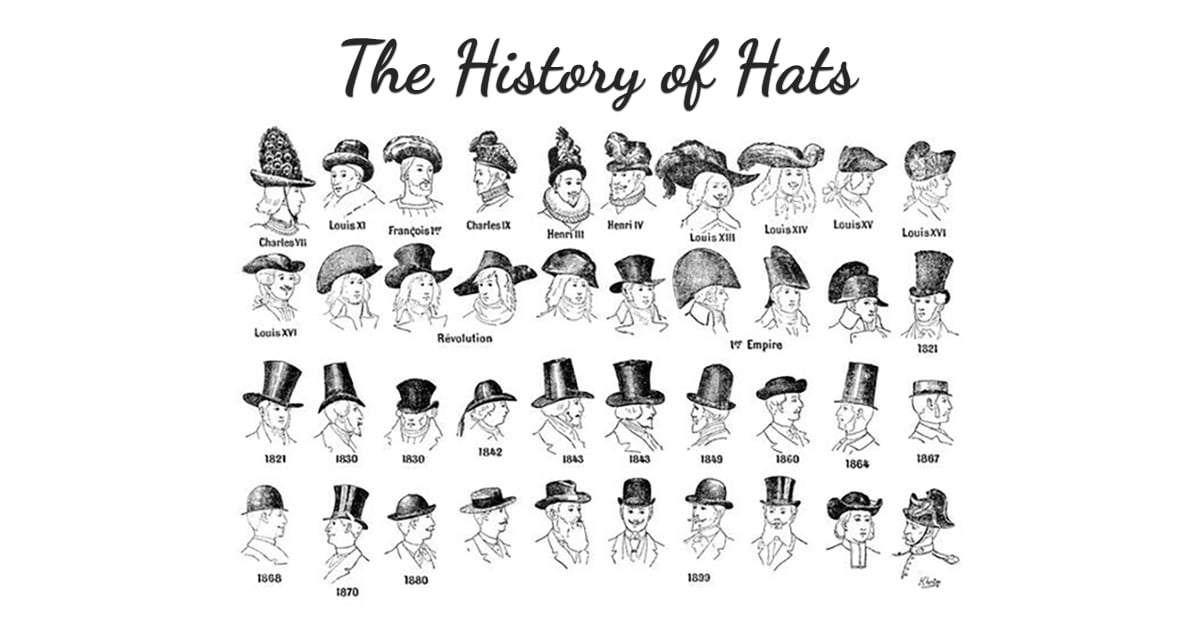Summer Essentials
Get ready for Summer!
Panama Hats
Style the Perfect Hat!
Get ready for Summer!
Style the Perfect Hat!
Hats have long been an integral part of human culture, serving as both functional accessories and stylish adornments throughout history.

As a fashion enthusiast and avid history buff, I have always found the history of hats fascinating. The evolution, cultural significance, and iconography of these statement pieces are as rich and varied as the fabrics they are crafted from. From ancient royal crowns to modern baseball caps, the history of hats tells a story of societal norms, individual expression, and artistic representation. Join me as we explore this captivating journey through the annals of hat fashion.
Table of Contents
ToggleThe history of hats is as old as civilization itself. Ancient Egyptians used hats as a symbol of status, adorning their Pharaohs with elaborate headdresses like the ‘Nemes’, a royal blue-striped cloth that signified their divine nature. In contrast, the commoners often wore simple straw hats as protection from the harsh sun.
During the Middle Ages in Europe, hats became even more entrenched in societal norms and regulations. They were used to denote marital status, occupation, social hierarchy, and even religious devotion. The advent of the sumptuary laws further cemented the importance of hats in determining a person’s standing within society. Hats were so critical that they were often involved in social customs, such as the act of tipping one’s hat as a sign of respect.
From the 18th century onwards, hats became an essential aspect of fashion. With the onset of industrialization and mass production, different styles and types of hats proliferated. As society modernized, hat designs became more extravagant and intricate to reflect the social and economic status of the wearer. The cultural significance of hats remains to this day, now often seen as an accessory that can make a bold fashion statement or symbolize a particular affiliation or identity.
Hats have been immortalized in countless works of art and literature, reaffirming their cultural significance.
n art, they have been used as symbols to convey messages, enhance the character of the subject, or add depth to the composition. For instance, in many of Jan Vermeer’s 17th-century paintings, hats are worn by his subjects to denote their social status and occupation. His famous work “Girl with a Pearl Earring” features a turban, a fashionable accessory amongst the Dutch upper class during the period.
In literature, hats have been used as potent symbols. In Lewis Carroll’s “Alice in Wonderland”, the Mad Hatter’s oversized top hat represents his eccentricity and madness, while in J.D. Salinger’s “The Catcher in the Rye”, Holden Caulfield’s red hunting hat symbolizes his individuality and desire for protection from the outside world.
Similarly, in movies and plays, hats have been employed to define characters and set the mood. From Charlie Chaplin’s bowler hat to Indiana Jones’ fedora, hats have been integral to creating memorable cinematic moments and iconic characters.
Throughout history, some hats have become iconic, transcending their original purpose and becoming symbols in their own right.
The ancient Egyptian crowns, for instance, are a testament to the grandeur and mystique of the Pharaohs, while the Papal Tiara, worn by the Popes of the Roman Catholic Church, signifies the church’s authority and divinity.
In the world of fashion, few hats have achieved as much fame as the elegant and timeless fedora. Popularized in the 1920s, the fedora has been worn by everyone from gangsters to Hollywood stars, becoming a symbol of style, sophistication, and sometimes, rebellion.
Cowboy hats hold a significant place in the history of hats. From their origin in the 1860s to their modern-day status as a symbol of the rugged West, the history of hats is incomplete without acknowledging the impact of cowboy hats. They served a practical purpose, protecting ranchers and cowboys from harsh weather conditions, and have since transformed into a fashion statement. Explore the intriguing trajectory of cowboy hats in the history of hats to appreciate their unique blend of functionality and style.
In more recent times, the baseball cap has emerged as a significant cultural emblem. Originally designed for practical purposes – to shield baseball players’ eyes from the sun – it has evolved into a ubiquitous symbol of casual wear and urban culture. Today, whether embellished with a sports team’s logo or a fashion brand’s emblem, the baseball cap is a staple in wardrobes around the world.
The history of hats is a captivating journey through time and culture. These simple yet powerful adornments have shaped and been shaped by the societies in which they were worn. They have held religious, political, and social significance, and have been used to convey individuality, status, and style. From ancient crowns to modern caps, each hat carries with it a story, a symbol, and a piece of history.
As we don our hats today, we are not just making a fashion statement; we are partaking in a tradition that has spanned thousands of years, and will likely continue to evolve, innovate, and inspire in the years to come.
